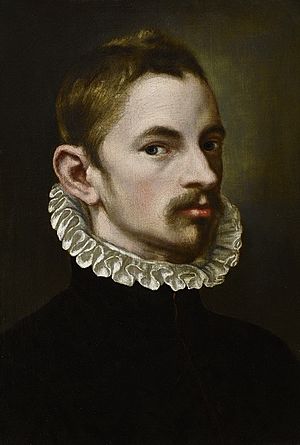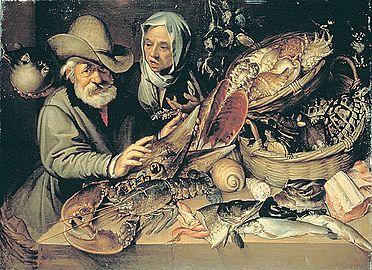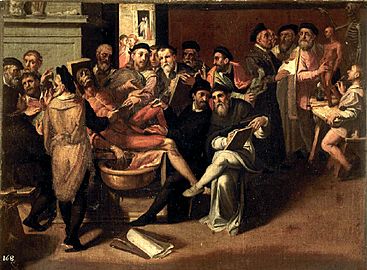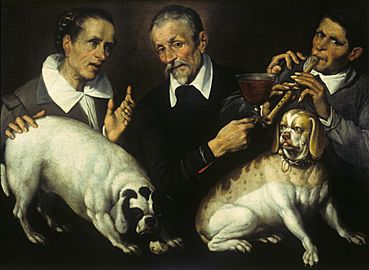Bartolomeo Passarotti facts for kids
Bartolomeo Passarotti (born in 1529, died in 1592) was an Italian painter. He was known for his art during a period called Mannerism. He mostly worked in his hometown of Bologna, Italy. His family name can also be spelled Passerotti or Passarotto.
Quick facts for kids
Bartolomeo Passarotti
|
|
|---|---|

Self-portrait (c. 1560)
|
|
| Born | 1529 |
| Died | 1592 |
| Nationality | Italian |
| Known for | Painting |
| Movement | Mannerism |
A Painter's Life and Art
Bartolomeo Passarotti lived in Rome from about 1550 to 1555. While there, he learned from famous artists like Giacomo Barozzi da Vignola and Taddeo Zuccari. These experiences helped him develop his unique painting style.
After his time in Rome, Passarotti returned to Bologna. He opened a large art studio there. From 1564 to 1565, he painted a big altarpiece for the Basilica of San Giacomo Maggiore. An altarpiece is a work of art placed behind the altar in a church.
Later in his career, Passarotti started to use ideas from artists in Tuscany. He was inspired by painters like Giorgio Vasari and Prospero Fontana. His last known painting was The Presentation of Mary in the Temple. He finished this work in 1583. Today, you can see it at the Pinacoteca Nazionale di Bologna.
Passarotti had a big impact on many painters from Bologna. These artists later helped start the Baroque art movement. For example, Annibale Carracci was influenced by Passarotti's everyday scenes. Annibale's brother, Agostino Carracci, even studied with Passarotti. Some of Passarotti's own students included Lucio Massari and Francesco Brizzi.
Passarotti also had three sons who became painters. Their names were Ventura (1566–1618), Aurelio (1560–1609), and Tiburzio.
Selected Works
See also
 In Spanish: Bartolomeo Passerotti para niños
In Spanish: Bartolomeo Passerotti para niños





